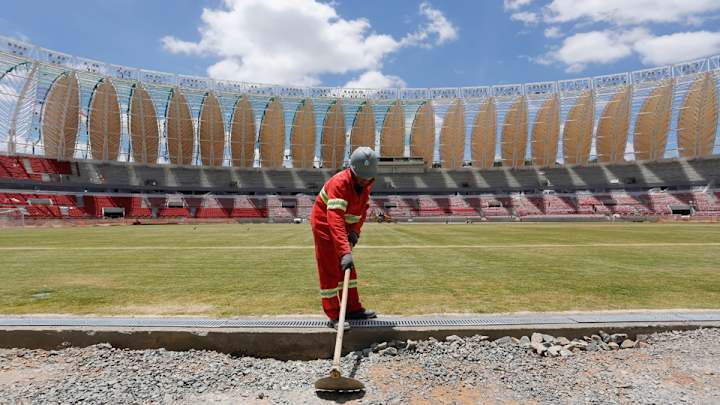Tackling Climate Change: How the USMNT is Training for World Cup Heat and Intensity

With the June 12 start of the World Cup in Brazil rapidly approaching, U.S. Men’s National Team head fitness coach Masa Sakihana is turning up the heat on his charges. Sakihana tells Edge that in this final stage his training program must focus on the challenges of performing in a warm environment.
With 23 players on the active roster already well acquainted with Sakihana’s strategies, having spent the first two weeks of training camp in Palo Alto heavily invested in his program, the players must now work to acclimatize to Brazil-like conditions.
Traveling to Florida for a June 7 friendly against Nigeria was about more than an on-field tune-up.
“Going down to Florida, the main goal is to acclimatize to the environment,” Sakihana says. “When we go to a warm environment, you have to cut down on some volume of training.” Players and trainers also must remain vigilant, as a body not fully adjusted may turn what was designed as a medium-intensity workout into something much more. “We have to plan training sessions for different climates and be real careful of intensity, volume and rest between exercises.”
Keeping the body in the Florida zone will remain a key focus for Sakihana. With the USMNT’s three group-stage matches scheduled for three of the four northernmost of the 12 World Cup venues, the U.S. faces a warm-weather tournament, more so than any other country.
That makes the team’s headquarters in Sao Paulo, where conditions will be milder, not entirely friendly for the fitness team.
PLANET FÚTBOL: Complete Coverage of the 2014 FIFA World Cup
“We will try to minimize the days in Sao Paulo,” Sakihana says. “Once we have acclimatized to the weather in Florida, if you stay too long in Sao Paulo your body will lose the benefits of Florida.” So expect the U.S. to head north to Natal for its opening-round game on June 16 a bit early.
But dealing with the climate is just part of what Sakihana has focused on since joining the Jurgen Klinsmann staff in 2011.
Each player, when he enters camp, undergoes a full pysiological screening, allowing trainers to find any issues or imbalances in their movements. “From Day One we have 30 players, and they all have different programs to fix those issues,” Sakihana says. The team has the players working through the individualized plans—a difficult concept in team sports, Sakihana points out—before they hit the pitch for training. Once on the field, the training turns more position-specific than player-specific, full of bands, cords, harnesses and belts for agility, stability and acceleration training. Attacking players will work on explosiveness, while defensive players focus on quick changes of direction.
MORE: Meet the 23: An Introduction to the U.S. 2014 World Cup Team
The strength training stays general, with a focus on core exercises. “We’re still putting a lot of emphasis on upper body and lower body, but they are not just sitting there on a machine,” he says. “[The players] perform functional exercises that will help them become more explosive. Our emphasis is on movement efficiency so they move better on the field.”
With nearly three years’ history of working with these players, Sakihana says, most USMNT athletes can step right into one of his regimens. Early in his tenure, it took him a bit of extra effort to establish his rhythm, but now expectations are set. And it isn’t like soccer clubs the world over are doing drastically different things, making it even easier for players to arrive at camp from Liverpool or Seattle and step right into a team routine.
While the first two weeks at Stanford were focused on physical fitness and acclimatization, time at the team base in Sao Paulo will center on a USMNT-specific performance gym, full of pneumatic training systems (for “functional exercises,” mind you), a hydro machine and all the bands, benches and dumbbells you would expect. Plus, a team chef and team nutritionist will keep players on point with tailored menus, supplements and shakes.
It remains Sakihana’s job to keep a weather eye on everything else associated with fitness.
Tim Newcomb covers stadiums, design and gear for Sports Illustrated. Follow him on Twitter at @tdnewcomb.

Based in the Pacific Northwest, Tim Newcomb covers stadiums, sneakers, design, training and technology across all sports.